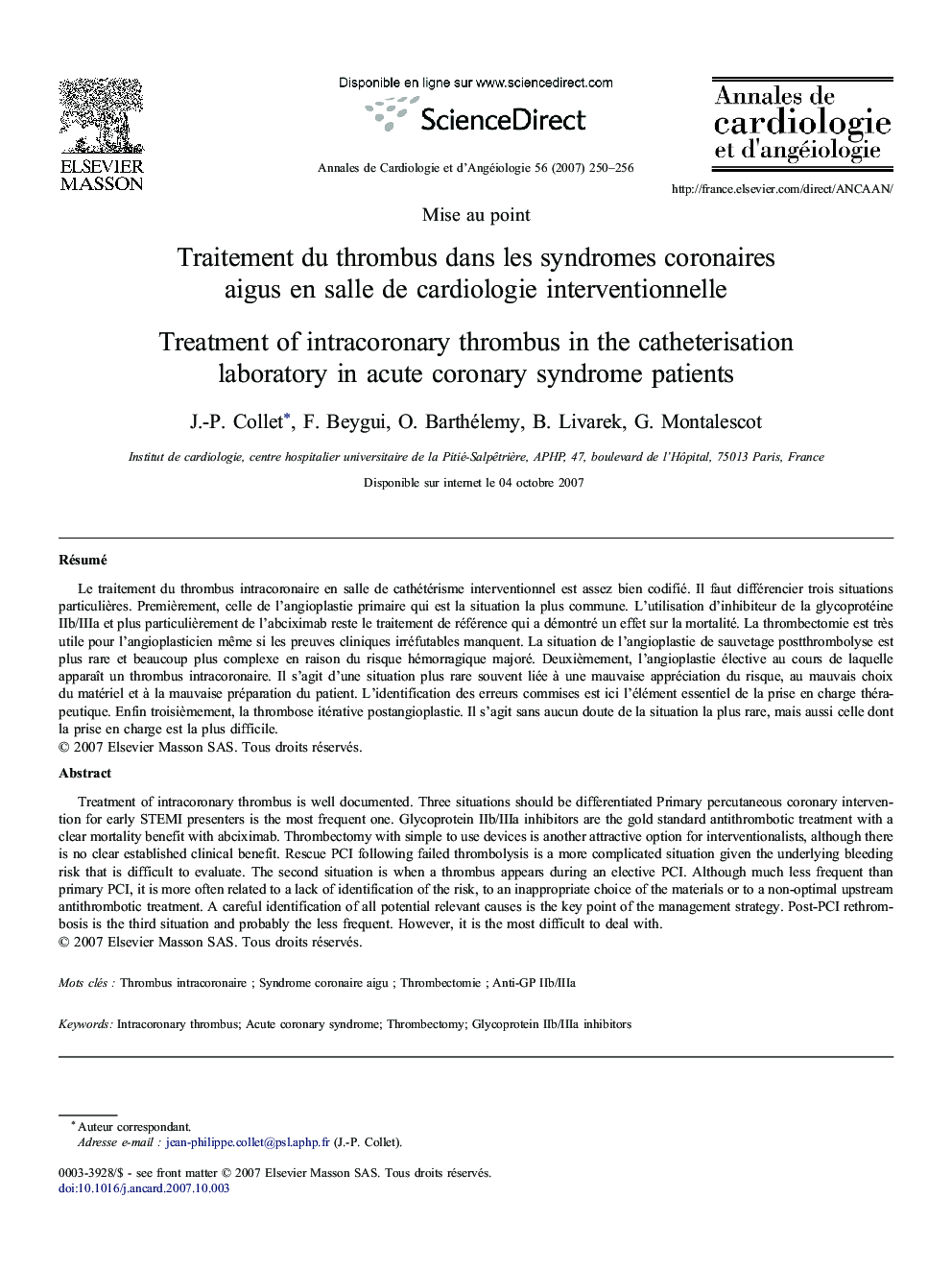| Article ID | Journal | Published Year | Pages | File Type |
|---|---|---|---|---|
| 2869582 | Annales de Cardiologie et d'Angéiologie | 2007 | 7 Pages |
RésuméLe traitement du thrombus intracoronaire en salle de cathétérisme interventionnel est assez bien codifié. Il faut différencier trois situations particulières. Premièrement, celle de l'angioplastie primaire qui est la situation la plus commune. L'utilisation d'inhibiteur de la glycoprotéine IIb/IIIa et plus particulièrement de l'abciximab reste le traitement de référence qui a démontré un effet sur la mortalité. La thrombectomie est très utile pour l'angioplasticien même si les preuves cliniques irréfutables manquent. La situation de l'angioplastie de sauvetage postthrombolyse est plus rare et beaucoup plus complexe en raison du risque hémorragique majoré. Deuxièmement, l'angioplastie élective au cours de laquelle apparaît un thrombus intracoronaire. Il s'agit d'une situation plus rare souvent liée à une mauvaise appréciation du risque, au mauvais choix du matériel et à la mauvaise préparation du patient. L'identification des erreurs commises est ici l'élément essentiel de la prise en charge thérapeutique. Enfin troisièmement, la thrombose itérative postangioplastie. Il s'agit sans aucun doute de la situation la plus rare, mais aussi celle dont la prise en charge est la plus difficile.
Treatment of intracoronary thrombus is well documented. Three situations should be differentiated Primary percutaneous coronary intervention for early STEMI presenters is the most frequent one. Glycoprotein IIb/IIIa inhibitors are the gold standard antithrombotic treatment with a clear mortality benefit with abciximab. Thrombectomy with simple to use devices is another attractive option for interventionalists, although there is no clear established clinical benefit. Rescue PCI following failed thrombolysis is a more complicated situation given the underlying bleeding risk that is difficult to evaluate. The second situation is when a thrombus appears during an elective PCI. Although much less frequent than primary PCI, it is more often related to a lack of identification of the risk, to an inappropriate choice of the materials or to a non-optimal upstream antithrombotic treatment. A careful identification of all potential relevant causes is the key point of the management strategy. Post-PCI rethrombosis is the third situation and probably the less frequent. However, it is the most difficult to deal with.
